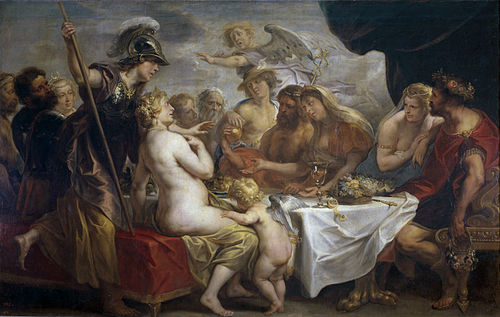- Thebes c. 1400 BCE
- 5th-century mural painting from the Ajanta Caves, India
- Winged genius, fragment. Second-style mural painting, Roman artwork, late 1st century BCE.

A figure painting is a work of fine art in any of the painting media with the primary subject being the human figure, whether clothed or nude. Figure painting may also refer to the activity of creating such a work. The human figure has been one of the constant subjects of art since the first Stone Age cave paintings, and has been reinterpreted in various styles throughout history.
Contents
- Clothed figures
- Portraiture
- Everyday life
- Narrative paintings
- Nude figures
- History and styles
- Notes
- See also
- References
- Books
- Web
- External links
Unlike figure drawings which are usually nudes, figure paintings are often clothed depictions which may be either historically accurate or symbolic. Figure painting is not synonymous with figurative art, which may depict real objects of any kind (including humans and animals).
















